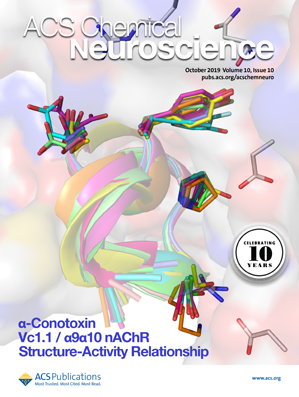Automated, Transferable, and Ethanol-Free Radiosynthesis of [11C]Butanol
IF 4.1
3区 医学
Q2 BIOCHEMISTRY & MOLECULAR BIOLOGY
引用次数: 0
Abstract
Cerebral blood flow and blood–brain barrier permeability assessment are crucial hemodynamic parameters to measure under neurological conditions. In conjunction with positron emission tomography (PET), oxygen-15-labeled water has emerged as a gold standard for measuring cerebral perfusion; however, at higher flow rates, [15O]water extraction becomes nonlinear. In such a scenario, freely diffusible [11C]butanol can provide a truer estimate. Radiosyntheses of [11C]butanol reported to date are protracted, are not automated, or require ethanol in the final formulation. By using a flow-based, captive solvent approach on a commercially available radiosynthesizer, we automated and reduced the synthesis time to 28 min. Forgoing cartridge-based purification for an aqueous high-performance liquid chromatography method, we obtained high purity [11C]butanol in ethanol-free phosphate buffered saline in sufficient yields for clinical PET studies. We here report our expedited, automated, and ethanol-free radiosynthesis of [11C]butanol along with preliminary imaging of a porcine subject.

自动化、可转移、无乙醇的[11C]丁醇放射合成技术
脑血流量和血脑屏障通透性评估是神经系统条件下测量的重要血液动力学参数。结合正电子发射断层扫描(PET),氧-15 标记的水已成为测量脑灌注的黄金标准;然而,在流速较高时,[15O]水的提取会变得非线性。在这种情况下,可自由扩散的[11C]丁醇能提供更真实的估计值。迄今为止报道的[11C]丁醇放射合成耗时长、非自动化或最终配方中需要乙醇。通过在市售的放射合成仪上使用基于流动的封闭溶剂方法,我们实现了自动化,并将合成时间缩短至 28 分钟。由于放弃了采用水基高效液相色谱法进行滤筒纯化,我们在不含乙醇的磷酸盐缓冲盐水中获得了高纯度的[11C]丁醇,其产量足以用于临床 PET 研究。我们在此报告了[11C]丁醇的快速、自动化和无乙醇放射合成,以及对猪受试者的初步成像。
本文章由计算机程序翻译,如有差异,请以英文原文为准。
求助全文
约1分钟内获得全文
求助全文
来源期刊

ACS Chemical Neuroscience
BIOCHEMISTRY & MOLECULAR BIOLOGY-CHEMISTRY, MEDICINAL
CiteScore
9.20
自引率
4.00%
发文量
323
审稿时长
1 months
期刊介绍:
ACS Chemical Neuroscience publishes high-quality research articles and reviews that showcase chemical, quantitative biological, biophysical and bioengineering approaches to the understanding of the nervous system and to the development of new treatments for neurological disorders. Research in the journal focuses on aspects of chemical neurobiology and bio-neurochemistry such as the following:
Neurotransmitters and receptors
Neuropharmaceuticals and therapeutics
Neural development—Plasticity, and degeneration
Chemical, physical, and computational methods in neuroscience
Neuronal diseases—basis, detection, and treatment
Mechanism of aging, learning, memory and behavior
Pain and sensory processing
Neurotoxins
Neuroscience-inspired bioengineering
Development of methods in chemical neurobiology
Neuroimaging agents and technologies
Animal models for central nervous system diseases
Behavioral research
 求助内容:
求助内容: 应助结果提醒方式:
应助结果提醒方式:


